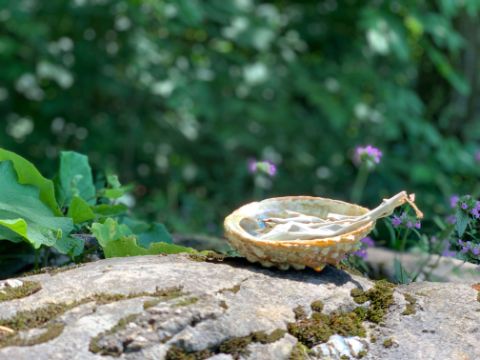A Convening on Rematriations, Reparations, and Restitutions
with Sylvie Njobati, Eeva-Kristiina Nylander, Rosanna Raymond, and Michelle Schenandoah
Conversation
Fri., 24.1.2025
19:00
Mrinalini Mukherjee Hall
Free entry

Michelle Schenandoah, Rematriation, a path to returning the sacred to the Mother (2024). Courtesy of Michelle Schenandoah
Sometimes centuries—and sometimes just a few years—have passed since the Indigenous heritage of Asia, Africa, the Pacific, and the Americas was plundered. Despite these plunderings, communities from these regions have built the foundations to allow their essential beliefs to remain alive. The question of restitution is only relevant, insofar as it involves a conscious effort towards reparation and rematriation. One should focus on the collective organizing and community empowerment that allows the knowledge of past invaded lands to be passed down through generations. Rematriation—a framework conceptualized by Indigenous women of Turtle Island in contrast to the term ‘repatriation’ with its patriarchal connotations—describes the restoration of an equilibrium by returning cultural property to its rightful owners, or, in rematriational terms, returning the sacred to the mother. It’s portrayed as a conscious shift away from decolonial practices still portraying Europe or European systems as the centers of reflection and actions. The meetings at HKW aim to achieve cultural rematriation by welcoming the voices of artists and cultural practitioners who actively value and preserve traditional heritage.
This conversation brings together artists, activists, and thinkers Rosanna Raymond, Sylvie Njobati, Michelle Schenandoah, and Eeva-Kristiina Nylander who have each contributed to processes of rematriation that entail the effective restitution of material heritage as in the case of the Ngonso statue, symbol of fertility of the Cameroonian Nso communities; the recognition of intangible spirits, here named vā bodies, held captive in western museums and the manifestations of resistance observed by generations of Aotearoa Tangata Moana; the role and mission embedded into Indigenous knowledge transmissions from generations to generations both in the Sami and Haudenosaunee communities where rematriation becomes a way of life.